Beth Tabler's Blog, page 207
December 21, 2021
Review – Legendborn by Tracy Deonn
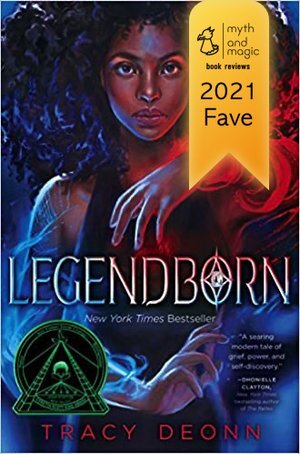 check it out here
check it out here BOOK REVIEW
LEGENDBORN TRACY DEONNREVIEW BY MYTH AND MAGIC BOOK REVIEWS
December 21, 2021 1:00 pm No Comments Facebook Twitter WordPress Don't make your life about the loss. Make it about the love. ReviewMyth: 5/5
I barely have words to try and explain the amazingness that is Legendborn. Let’s start with the basics, a secret society with King Arthur and the Knights of the Round Table mythology. Introduce the main character, Bree, a young girl in an early college program, trying to deal with her mother’s death. She finds herself the only black girl in a white, feudal, secret society in which she’s potentially ‘skipping the line’ to participation. I couldn’t get enough of the perspective. Bree has all the drama of the outsider coming into a secret society, she is trying to hide powers that she doesn’t understand, and on top of all that, she has to sort through her blackness in this traditionally, very white space.
Did I mention a perfectly done YA romantic subplot that keeps you on your toes through the end of the book (and begging for more)?
Magic: 5/5
I can’t get over the whole setup. The secret society is built around descendants from the lines of the original knights of the round table. It’s hierarchical with King Arthur’s descendant at the head. Though the descendants aren’t all necessarily ‘called’ to serve unless the need is present (ie imminent danger). On top of this setup, there is the sort of feudal supporting system around the knights, which includes squires and vessels.
I just think it was pure awesomeness to pull this well-known legend into the present and turn it on its head.
Overall: 5/5
The Legendborn mythology was amazing. Pulling from King Arthur and the Knights of the Round table with modern-day descendants. Set on a modern-day college campus, giving off that urban fantasy vibe. Bree was a brilliant heroine, surrounded by a strong cast.
Check out the original article Check Out some of our other reviewsReview – The Final Girl Support Group by Grady Hendrix
Review – The City of Brass (The Daevabad Trilogy #1) by S.A. Chakraborty
MYTH AND MAGIC BOOK REVIEWS
Myth and Magic Book Club was started by two friends on opposite coasts with a shared love of fantasy books. We love reading and reviewing fantasy romance, urban fantasy, YA fantasy, and more.
TWITTER @MythandMagicBC
REVIEW – Cemetery Boys by Aiden Thomas
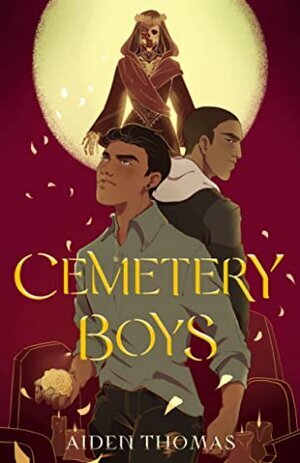 check it out here
check it out here BOOK REVIEW
CEMETERY BOYS by AIDEN THOMASREVIEW BY MYTH AND MAGIC BOOK REVIEWS
December 21, 2021 10:00 am One Comment Facebook Twitter WordPress “Queer folks are like wolves," Julian told him. "We travel in packs."Myth: 4/5
I really like reading that this book started off as “what if I accidentally summoned a ghost and couldn’t get rid of them?” and grew into this charming and powerful story. Julian and Yadriel make a perfect pair as they try to take care embrace very different futures. Their chemistry is a delight, Julian tending to splash his emotions all over the place and Yadriel more reserved but determined. Together, with the help of Yadriel’s cousin, we go on a quick adventure, trying to tie up loose ends and solve a murder in the brujx community.
Magic: 4.5/5
The rich world of the brujx jumped right off the first page. A family heritage, steeped in history and gender based magic roles. It was such a perfect setting, adding it’s own set of magical challenges for Yadriel, a trans boy, to deal with. Will his magic reflect his identity? Will his family traditions even give it a chance?
Overall: 4/5
Perfect spooky season vibes with witches that shepherd the dead and Dia de Muertos celebrations. Amazing exploration of a trans boy coming of age in a magical community with gender specific magical powers.
Check Out some of our other reviewsReview – The Final Girl Support Group by Grady Hendrix
MYTH AND MAGIC BOOK REVIEWS
Myth and Magic Book Club was started by two friends on opposite coasts with a shared love of fantasy books. We love reading and reviewing fantasy romance, urban fantasy, YA fantasy, and more.
TWITTER @MythandMagicBC
December 20, 2021
Review – Black Sun by Rebecca Roanhorse
 check it out here
check it out here BOOK REVIEW
BLACK SUN by REBECCA ROANHOUSE December 20, 2021 10:00 am No Comments Facebook Twitter WordPress And Grandfather Crow said to First Woman, tell me your stories so that I might know who you are and what you value. If your stories are of the glory of war, I will know you value power. If your stories are of kinship, I know you value relationship. If your stories are of many children, I know you value legacy. But if your stories are of adaptation and survival, of long memory and revenge, then I will know you are a Crow like meWhoa. I did NOT expect this story to end the way it did, but I want to read Book 2 NOW!!!
Great characters, amazing world-building and excellent plot points. The magic and the sorcery balances this fantasy between fantasy and magic realism (I’ll explain more in my review).
All 4 protagonists are complex people who find themselves being responsible for a group of people, and their choices affect those around them and everything they care about. As ‘The Day of Convergence’ approaches, each of the protagonists develop into the individuals their roles demand of them to the point where not even the secondary characters can divert them from their path. Without getting into too many spoilers, two of the protagonists were predestined to be part of ‘The Day of Convergence,’ but an argument can be made that they could have chosen to resist that fate at any given time before that day. In fact, the choices of the other two protagonists should be noted as well because they all have no choice but to live with the decisions they make leading up to the winter solstice. History and folklore aside, the use of foreshadowing and of characterization enhances the story to the point where readers known what is going to happen and why, and that there was no way to prevent the events from happening. By the time everything is revealed, the protagonists have made their decisions, and what is going to happen, happens. This leaves the reader(s) stunned, yet anticipating what will happen next during the aftermath of those events. It’s a shocking and an impressive move by the author.
“Black Sun” is proof that Rebecca Roanhorse can weave her talent and her heritage into powerful stories over and over again. If you need a reason to read one of her books, or if you want to read a fantasy series that will take your expectations to another level, then you really should read this book. It has everything from magic and prophecies to political power struggle based on a moment in human history, in which it all could have happened, but its setting is a fantasy world.
Go read this book!!!
For my complete review, go here: https://mistyaquavenatus.com/2020/09/…
Review – The Final Girl Support Group by Grady Hendrix
LOIS YOUNG
I am the daughter of fans of the speculative fiction genre! My late mother was a HUGE Vincent Price fan and my father is OBSESSED with James Bond! While they were dating, they watched the original Star Wars in theaters!
My brothers and I grew up watching: Star Wars, Star Trek, DC, Marvel, anime, and other television shows and movies that satisfied our innate love of speculative fiction!
Now, I’m an ambitious writer with many WIPs. I’m an avid reader of science fiction, folklore, fantasy, classics, contemporary, graphic novels and manga, etc. I blog about books and other media that believe others would enjoy. I’m a contributor to Fantasy-Faction, too!
In addition, I enjoy running, playing video games, gardening, and watching sports! I cheer for Jamaica, Manchester United, the NY Giants, the NY Mets, and the NY Islanders!
I hope you enjoy my content!
“Episode 31: L.A. Young- ‘Race and Oppression in Sci-Fi’”–an episode recorded for the “Sisters of SciFi” podcast
“Storytelling in Speculative Fiction Reveals a Buried History”–an essay I wrote for the SFWA Blog.
Follow me at:
Twitter: https://twitter.com/AquaVenatus
Instagram: https://www.instagram.com/aquavenatus
Goodreads: https://www.goodreads.com/user/show/2905400-lois-young
YouTube: https://www.youtube.com/channel/UCLOH5jwux5Wk3r5K2_z-ezQ?view_as=subscriber
December 19, 2021
Short Story Review – Metal Like Blood in the Dark by T. Kingfisher

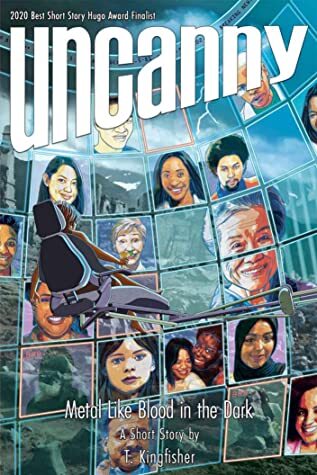 check it out here
check it out here SHORT STORY REVIEW
Metal Like Blood in the Dark BY T. KINGFISHER December 19, 2021 1:00 pm No Comments Facebook Twitter WordPress “What did a lie do once you let it loose?”Metal Like Blood in the Dark” by T. Kingfisher mashes Hansel and Gretel with artificial intelligence into a story centered on the fall of Eve, but this time she learns the fallen one’s tricks and tries to use those tricks against them.
There are many dangers in innocence. Brother and Sister, two imperfect creations brought to life by a dying, imperfect father on a planet that has everything they would ever need, get their first taste of danger almost as soon as they are on their own. Father claims they are safest in space, because they would be beyond the reach of humans, but there are dangers unknown to Father as he is not a machine, and danger can be as unique as each individual. After leaving their first home, the world that they were created to exist within, Brother and Sister quickly find they need to keep changing to survive, as space is a vast, dangerous place.
Innocence leads Brother into thinking the best of a dark creature that holds them captive and it is up to sister to learn how to get them out of a dangerous situation. “Metal Like Blood in the Dark” works almost as a thought experiment. Kingfisher plays with themes that toe a delicate line around cannibalism, corruption, revenge, goodness and cleverness. Whether Sister can change enough to survive, she will be forever changed by what she must contemplate for the sake of saving Brother and herself. Her innocence will be forever lost.
Check Out some of our other reviewsDecember 18, 2021
Review – The Empress of Salt and Fortune by Nghi Vo

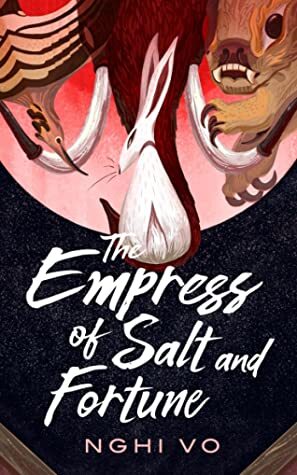 check it out here
check it out here BOOK REVIEW
THE EMPRESS OF SALT AND FORTUNE by Nghi Vo December 18, 2021 10:00 am No Comments Facebook Twitter WordPress "Angry mothers raise daughters fierce enough to fight wolves.” In most ways, The Empress of Salt and Fortune is the sort of epic tale we fantasy fans are used to. A woman, In-yo, goes to a foreign land to consummate a treaty marriage; she suffers, learns, grows, overcomes. The few ways it differs are quite important. One is that it’s not told by In-yo, but by one of her servants, many years after. Another is that it’s all crammed into a novella. In doing so, Nghi Vo has managed a remarkable feat. The scope of the world shown, the years and the cultures, would be considerable in a full novel. How Vo portrays this is ingenious. In-yo’s handmaiden, Rabbit, is talking to Chih, a historian and cleric, telling her and the empress’ story. Each chapter, each tale, is preceded by a description of items from the empress’ inventory. Most of the stories end with the line: “do you understand?” See, this book isn’t just clever and detailed, it’s poetic and insightful too. It is an exploration of what it means to be a stranger in a strange land, of what it means to love and trust in a place where that affection can be signing a death sentence, and what it means to be a woman when a woman’s life is restrained in many ways. When Rabbit says “do you understand” she isn’t just asking Chih, seeing whether her subtleties and truths are understood, she is asking us too if we wish to hear. The fourth wall is permeable at our discretion here, although it is never removed. Like Chih, I do not think I understood everything. Like Chih, I was completely absorbed by Rabbit’s tales. Each vignette is a delectable morsel, an excellent short story in its own right that becomes part of a bigger whole. Particular standouts for me include learning of the In-yo’s fondness for fortune tellers, and her conflicts with the Minister for the Left. Speaking of unmentioned standouts, each character told of springs to life, full of memorable lines and with an obvious place in the drama. There’s a hint of archetype to them, but Vo mostly forgets the archetypal characters to concentrate on the oddballs; the former innkeeper’s daughter turned Imperial wife, the loyal fortune teller Sukai, the neixin (a type of intelligent bird) Almost Brilliant. At some point in a review I like to talk about a book’s weak points. That’s quite difficult here. Yes, some will see the lack of bloody conflict, the unusual structure, as bugs rather than features for such is life. This is a very idiosyncratic story. However, every element needed to make Nghi Vo’s vision is here in abundance. As an example of what it wants to be, it is very difficult to find fault with The Empress of Salt and Fortune. To sum up this is a beautifully written work with enthralling world building and scenes, intriguing characters and storytelling, and an epic storyline. The ending seems wonderfully appropriate and satisfying too. I don’t know how it’s all captured in one novella, but you owe it to yourself to take a chance on discovering the same magic. — Check Out some of our other reviewsShort Story Review – Badass Moms in the Zombie Apocalypse by Rae Carson
Short Story Review -; A Guide to Working Breeds by Vina Jie-Min Prasad
PEAT LONG Peat is a blogger and aspiring author from the wilds of London. He was introduced young to The Hobbit and has insisted on living in his and others’ heads where possible ever since. When not there he can usually be found talking about cats, weird crisp flavours, how to compare anything to writing, and of course, fantasy books. When he grows up, he’d like to be someone who actually know what he likes, and will try anything twice except for Morris Dancing. To find out more about his writing, visit peatlong.wordpress.com or follow him on twitter at @peatlong He’s found writing about himself in the third person surprisingly enjoyable.
Peat is a blogger and aspiring author from the wilds of London. He was introduced young to The Hobbit and has insisted on living in his and others’ heads where possible ever since. When not there he can usually be found talking about cats, weird crisp flavours, how to compare anything to writing, and of course, fantasy books. When he grows up, he’d like to be someone who actually know what he likes, and will try anything twice except for Morris Dancing. To find out more about his writing, visit peatlong.wordpress.com or follow him on twitter at @peatlong He’s found writing about himself in the third person surprisingly enjoyable.
December 17, 2021
Short Story Review – Badass Moms in the Zombie Apocalypse by Rae Carson

 The container will hold 5/5
The container will hold 5/5 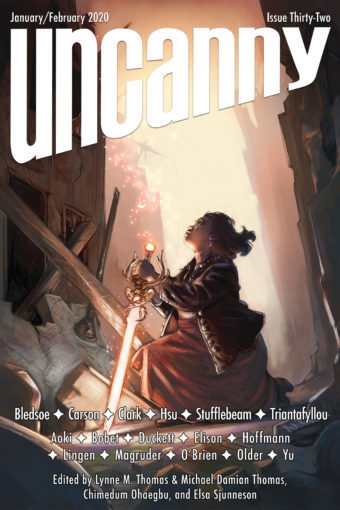 Badass Moms in the Zombie Apocalypse by Rae Carson Purchase Here
Badass Moms in the Zombie Apocalypse by Rae Carson Purchase Here Rae Carson, badass moms in the zombie apocalypse My Thoughts
“Her bony, paper-skin hand grasps mine in a show of strength she hasn’t displayed in weeks. “Honey, it’s okay to let me go,” she says. “Because I win. I win at everything.”
At my puzzled look she adds, “I get to die an old woman. Who does that these days? A badass motherfucker, that’s who.”―
I read many stories, sad stories, happy stories, fluffy ones, and occasionally violent stories. But in all of my reading, I rarely get a chance to read a mom story. Moms are usually portrayed as one of three different ways: soccer mom, women who are nothing but a mom, and an older mom or grandma-like figure.
Fantasy is full of cliches, and being a mom myself, I don’t see myself in any of these characters. It is as if literature is afraid to portray a mom as a badass or a warrior. Women can’t be warriors and moms. They cancel each other out, right? Just because we had kids, we don’t lose the badassery while passing the afterbirth. And frankly, life is a lot more exciting and complex than a trope.
But then I read Badass Moms in the Zombie Apocalypse, and finally. FINALLY, we have some great badass moms having babies and kicking some ass. Thank you, Rae Carson, for giving the world this story and me, mainly because I needed to be reminded that I am also a badass mom on occasion.
First, let me set a bit of a scene. Giving birth is a dirty business. It is primal; it is the most primal feeling many women feel only seconded to protecting their child from danger. Moma bear is not just a cute saying; most moms would rip the throat out of anyone who would come at their kid and lick their lips.
Now imagine trying to do all this, being pregnant, your body is split in two with excruciating pains that feel like they are tearing at the very fabric of who you are, and zombies are outside scratching at the door. I know zombies get a bad rep; they are everywhere in horror. But they are representative in this story. The mom Brit is being pulled apart by two massive forces, childbirth and the flight reaction of getting the hell out of there. Zombies are scary, and we want none of that.
“I know how tough my baby is. Remember when you came out to your Baptist preacher dad while holding the hand of the most beautiful Black woman in the world?”
“Yes.”
“This is not harder than that.”
“No.”
“Remember when you fucked that trader silly, faking the big O night after night until you were good and sure he’d given us a baby?”
“Yeah.”
“This is not harder than that.”
“Not even close.”
“You got this.”
“I think my water broke.”
Now imagine that you have to run for it. Fluid leaking down your leg, contractions are squeezing your body until you can hardly breathe. You mostly waddle now that you are nine months pregnant, carrying a watermelon in your pelvis. But you have to be quiet; sound travels. If you make a sound, they will come. And most of all, you need to get to the safe birth room so that you can lock yourself in. In Brit and Marisol’s case, it is a metal freight car.
Zombies love the smell of birth, it drives them crazy, and they will swarm outside and get in given a chance. Also, Brit has no medicine and the most rudimentary help. She is lying on the floor of a metal shipping container stuffing rags between her legs to stifle the smell of birth. If that is not badass, I don’t know what is.
“We barely got here in time,” I say.
“We knew they’d find us.”
We are silent a long moment. Another bang, then a slick whisper of a sound as something slides along the wall. I hardly dare to breathe.
“The container will hold,” Mari says.
“I know.”
“They’ll mass while you push that baby out, and for a day or two after. But we’ll keep quiet, and the birthing scent will fade, and they’ll eventually give up.”
“I know.”
“We’ll go back to the enclave with a brand new baby for everyone to love on.”
“I know.”
“They’ll be so glad we did this.”
“The container will hold. The container will hold,” Brit and Marisol chant to themselves. It will hold. It has to hold. An innocent is being born into this world, and he needs to live long enough so that they can name him.
Please hold.
Oh shit.
Oh shit.
It isn’t going to hold.
Rae Carson has created a hell of a short story here. I almost gave up trying to summarize and talk about my feelings about it with, “God, this is good. Please read.” Instead, I’ll start with God; this is good. Please read.
But read Badass Moms in the Zombie Apocalypse because Rae Carson took tropes of womanhood and mothers, twisted them, and smacked them with a hammer. There are no weak women in this world of zombies and blood. It is loving; Brit and Marisol are truly loving partners. It is full of community strength. It is primal. It is exciting, and most important of all, it is badass because you will need badass moms to lead the world out of a zombie apocalypse one child at a time.
Check Out My Other ReviewsReview Master Artificer by Justin Travis Call
If You Liked This - Please Share the Love Beth Tabler
Elizabeth Tabler runs Beforewegoblog and is constantly immersed in fantasy stories. She was at one time an architect but divides her time now between her family in Portland, Oregon, and as many book worlds as she can get her hands on. She is also a huge fan of Self Published fantasy and is on Team Qwillery as a judge for SPFBO5. You will find her with a coffee in one hand and her iPad in the other. Find her on: Goodreads / Instagram / Pinterest / Twitter
Review – Superman’s Pal Jimmy Olsen: Who Killed Jimmy Olsen? by Matt Fraction, Steve Lieber
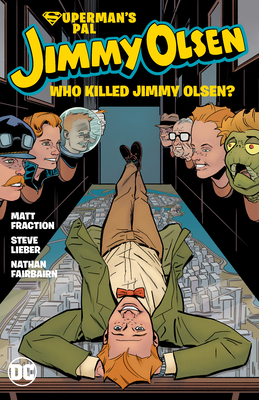 check it out here
check it out here BOOK REVIEW
Superman's Pal Jimmy Olsen: Who Killed Jimmy Olsen? by Matt Fraction, Steve Lieber December 17, 2021 10:00 am No Comments Facebook Twitter WordPressMatt Fraction’s run on Superman’s Pal Jimmy Olsen has received considerable critical acclaim, so I wanted to like it more than I actually did.
The 12-issue run is compiled into a hefty graphic novel with 320 pages of crisp, clean, personality-filled Steve Lieber art, which is really a joy to look at. And it compliments the wacky tale of Jimmy Olsen exploring the quirkier, silver ageier side of the DC Universe while simultaneously trying to solve a peculiar murder – his own.
I’ve seen some complaints about the series’ wacky, over-the-topness and some of its jokes not landing. This wasn’t really a problem for me. Did some of the jokes feel kind of weird and tryhard-ish? Sure. Sometimes. But humor is subjective and overall I think there were more hits than misses, especially when you account for the fact that this is a tongue-in-cheek homage to the silver age Jimmy Olsen comics that got real weird real fast.
Rather than the humor, what really kept me at a distance from this book was the disjointed structure of the narrative – constantly jumping around in time and place and plot to address several different things. It ping-pongs back and forth with no steady rhythm that plot points are dropped often in the middle of a scene, only to be picked up pages later.
I’m not averse to non-linear narratives, but I had a really hard time wrapping my head around this one. I had a similar issue with Fraction’s famous Hawkeye run – a book I love – but to a much lesser extent. Olsen felt largely inscrutable to me, possibly because the stranger, larger than life aspects of it were harder to keep track of than Hawkeye’s more grounded fare.
My biggest question is why? Why scramble the narrative so much? By the resolution of the ‘Who Killed Jimmy Olsen?’ mystery – the story was ultimately much simpler than the structure made it seem. That isn’t a knock against the plot, it was perfectly fine, but it didn’t feel like it justified the need to shuffle the order of events around to such an arbitrary degree. I certainly feel like I would’ve enjoyed the whole book a hell of a lot better if it were a bit more straightforward with some occasional asides to things like the ‘Lil Olsens’ segment.
Ultimately, the structure caused me to struggle through this book, though Steve Lieber’s art was fun and impeccable and the individual segments of Fraction’s writing had a sort of ‘Arrested Development’ quality to them. I just wish it was easier and clearer to follow. But it appears I might be in the minority on this, and I think I can accept that.
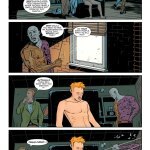
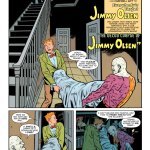
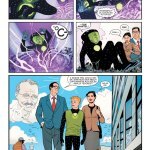
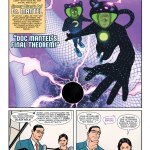
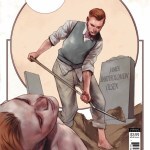
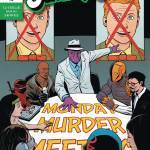

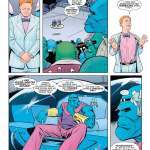
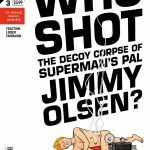
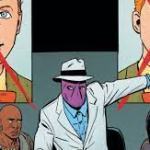
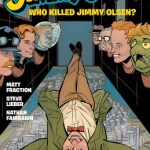 Check Out some of our other reviews
Check Out some of our other reviews Review – The Final Girl Support Group by Grady Hendrix
December 16, 2021
Short Story Review – A Guide to Working Breeds by Vina Jie-Min Prasad


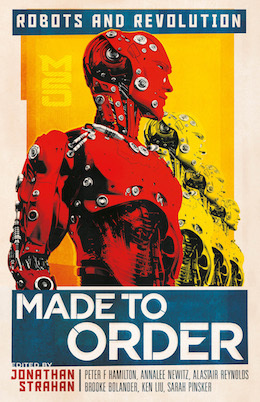
A Guide to Working Breeds by Vina Jie-Min Prasad originally found in Made to Order: Robots and Revolution edited by Jonathan Strahan
Reprint can be found here
SHORT STORY REVIEW
A GUIDE TO WORKING BREEDS by VINA JIE-MIN PRASAD December 16, 2021 2:00 pm No Comments Facebook Twitter WordPress “I talk to other beings very infrequently. / My contact with humans is usually from a distance.”The world has been a pretty intense place, well since always, but it turned the intensity up to 11 these past few years. Things got serious. And that also means stressful. In times like these, we need stories like “A Guide for Working Breeds” by Vina Jie-Min Prasad more than ever.
In this story, a grumpy and jaded curmudgeon of a robot is forced into mentoring a new hopeful. And a joyful little friendship begins to unfold. These two characters need each other. One needs a guide in how cruel the world can be and the other needs help finding the joy. In a word, it is cute… despite the assassinations.
A Guide to Working Breeds touches on serious topics with a light hand, and the outlook of both robots is very relatable. They bond over their shared frustrations and appreciations of the finer things in life, like corgis and pugs. This is the type of story where you sometimes have to read between the lines. It is presented as a series of messages, something that most people in the 21st century can probably follow with the same ease of reading a stranger’s text message conversation on the internet. This story is perfect for people that enjoy sweet, lighthearted characters, enemies to friends, breakfast foods, and cute dogs.
5/5 stars
Check Out some of our other reviewsShort Story Review – The Mermaid Astronaut by Yoon Ha Lee



SHORT STORY REVIEW
The Mermaid Astronaut by Yoon Ha Lee December 16, 2021 10:00 am No Comments Facebook Twitter WordPress “It will hurt,” the witch said. “Certain kinds of desire always do…”With simple language, Yoon Ha Lee sings a familiar song, one of a mermaid that longs to live someplace else. The prose states the story with the straightforwardness of a fairy tale where things simply are what they are because they are. But instead of this mermaid making a deal with the sea witch to walk among men, she chooses to give up something precious to walk in the stars.
Lee turns many tropes on their head, such as the evil sea witch becomes a helper and someone relatable without becoming soft or a caricature. Lee normalizes a non-binary character with they/them pronouns without making the story about gender issues and identity. He explores both the gift and the burden of knowledge as well as costs for that knowledge. With this retelling, Lee shows the struggles of getting everything that you want. He shows that even when dreams are not all fun and games, but require some work and effort, they are still worth having.
You can find the story here
Check Out some of our other reviewsDecember 15, 2021
REVIEW – Ring Shout By P. Djeli Clark

 check it out here
check it out here BOOK REVIEW
ring shout by p. djeli clark December 15, 2021 1:00 pm No Comments Facebook Twitter WordPress “Girl, every choice we make is a new tomorrow. Whole worlds waiting to be born.”Well, how appropriate for the tumultuous year that 2020 has been, not only in terms of the global pandemic, but also because of the notable racial unrest seen particularly in the United States, that my last book review of this unprecedented year is “Ring Shout”, by the highly decorated author (Hugo and Nebula Award Winner) P. Djèlí Clark.
I will say, foremost, that books like this are always difficult to read as a racialized Black man, reader, and author myself. I can imagine there must have been moments for the courageous Clark – never one to fear confronting the difficult subject of racial intolerance – where it was difficult to write, considering today’s context.
In “Ring Shout” Clark has written essentially a historical horror-fantasy. The genius of Clark is on full display in this novella. This cleverly-written book likely conjures up images for many of us Black people of how Blacks in Western Society have felt, while under terror and oppression of racism: like we are beset by monsters, driven by a hate that seems so unfathomable, so non-sensical, it must be alien / from another world. Still, “Ring Shout”, an extremely important book, should be read, as often the most difficult books to read are.
The novella is set in 1922, which is deep in the Jim Crow South era of the early 20th Century. In Ring Shout, the plot centres around the film “The Birth of a Nation”. You will forgive me, please, as I digress into more about this film, which has been typically acknowledged as “the most controversial film ever made in the U.S.”
Its plot, not unlike “Ring Shout” itself, could be considered part fiction and part history. The film tells of the assassination of U.S. President Abraham Lincoln by John Wilkes Booth. It also outlines the Civil War and Reconstruction eras, from a staunchly pro-Confederacy standpoint. Blacks are depicted as idiotic, buffoonish, depraved, slavering rapists of White females. Most of the blacks portrayed in the film are played by White actors in Blackface.
The Ku Klux clan in “The Birth of a Nation” are represented as akin to “Knights in Shining Armour” who preserve the virtue of White women, uphold American ideals, based on a social order of White Supremacy, by cleansing the U.S. of the Black “scourge”. The film was deemed to be responsible for the rejuvenation of the Ku Klux Klan, and thus a reign of violence against Blacks that lasted into the second half of the century.
In “Ring Shout” the reason the Ku Klux Klan can maintain its horrible rule of terror is primarily because there are inhuman, demonic members of the Klan who serve alongside the human members. The Alien Klansmen, called “Ku Kluxes”, purposely stoke the human Klansmen in their racial hatred of Blacks, perpetuating the power of the overall Klan, and their ability to terrorize Blacks. When “Ring Shout” begins, another screening of “The Birth of a Nation” will take place in Macon, Georgia, which will be a nexus for an even more sinister plan, driven by the Ku Kluxes.
The protagonist of the story is a young Black woman named Maryse, who hunts the Ku Kluxes with a magical sword. She has a band of helpers, including wonderful secondary characters such as fellow monster-hunters Sadie – a military veteran and sharpshooter – and Chef – an explosives expert. Maryse is also assisted by paternal figure, kind but capable Uncle Will, and Nana Jean, a Gullah woman and maternal figure to the orphaned Maryse. The book also features the “Aunties”, omnipotent figures who represent the magical “good” side in the fight against the Ku Kluxes.
This book is bloody, frightening, and memorable in the way a Stephen King or Dean Koontz will leave the reader haunted by the eerie images given long after they put down the book, specifically because of the monsters that haunt “Ring Shout”. But what will truly resonate with many readers is how Clark handles the subject of hate in the novel. Hate, when it comes to racism, Clark seems to remind us, is a two-sided coin. The Blacks who are being hated, can easily, and righteously, be motivated to hate the Whites who commit atrocities against them. But the message by Clark appears to be that the same hate can be a weapon used against both sides, with the most damaging of results and implications for humankind. When we forget that, in the end, people of all races are truly one unified human race, and begin to turn against each other in an endless cycle of hate, only hate emerges victorious, and we humans are merely condemned to more suffering.
“Ring Shout” is only about 180 pages, so I gobbled it up in two nights of reading. But its lack of size does not mean it does not pack a gut-punch to the senses. The fight sequences are heart-stopping, the social commentary is unflinching, and the horror element of the book, as I noted, is downright creepy. It is a masterpiece, I loved it, and it was fun, even with its serious subject matter. The characters are complex and wonderful, the setting is rich and imaginative, and Clark writes with dark humour, elegance, and ease. He is a top-tier author in any genre, and I highly recommend “Ring Shout” as a fantastic read.
I cannot think of a better way to close out 2020’s reading with this marvellous, frightening, momentous, novella, which was very appropriate for the year that was. Ultimately, Clark, in his book set in 1922, leaves us with hope for the future, which is thankfully what we also seem to have for 2021. Here’s hoping for more peace, unification and reconciliation among races, political opponents, genders / non-binary, creeds, social groups, religions and faiths, etc. across the world in 2021, and beyond.
Check Out some of our other reviewsReview – The Final Girl Support Group by Grady Hendrix
Review -The Haunting of Tram Car 015 by P. Djèlí Clark
Review – Ring Shout by P. Djèlí Clark
P.L. Stuart
I’m an experienced writer, in that I’ve been writing stories all my life, yet never thought to publish them. I’ve written informally – short stories – to entertain friends and family, for community newspapers, volunteer organization magazines, and of course formal papers for University. Now, later in life, I’ve published what I believe is a great fantasy novel, and definitely worth reading, called A Drowned Kingdom. My target audience is those who enjoy “high fantasy”. A Drowned Kingdom is not “dark fantasy”. It’s written in a more idealized and grandiose style that I hope isn’t too preachy, and not too grim. Still, I’m hoping my book has appeal to those who don’t typically read this type of work – those who don’t read fantasy of any kind – because of the “every-person” themes permeating the novel: dysfunctional familial relationships, extramarital temptation, racism, misogyny, catastrophic loss, religion, crisis of faith, elitism, self-confidence, PTSD, and more.
Many of these themes I have either personal experience with, or have friends or family who have dealt with such issues. I’ve had a long professional law enforcement career, undergone traumatic events, yet been buoyed by family, faith, and positivity. I’m a racialized middle-aged man. I’ve seen a lot of life. Ultimately I want the planned series, of which A Drowned Kingdom will be the introduction, to be one of hope, and overcoming obstacles to succeed, which I believe is my story as well. My protagonist, Othrun, will undergo a journey where he’ll evolve, change, and shape a continent. He’s not always likeable. He’s a snob, bigot, is vain, yet struggles with confidence. He’s patriarchal. Overall, he’s flawed. But even ordinary flawed people can change. We’re all redeemable.
Ordinary people can make a difference, not just fictional Princes. I want that message to shine through my work.
WHERE TO FIND HIMTwitter – @plstuartwrites
Facebook – @plstuartwrites
If You Liked This - Please Share the Love


